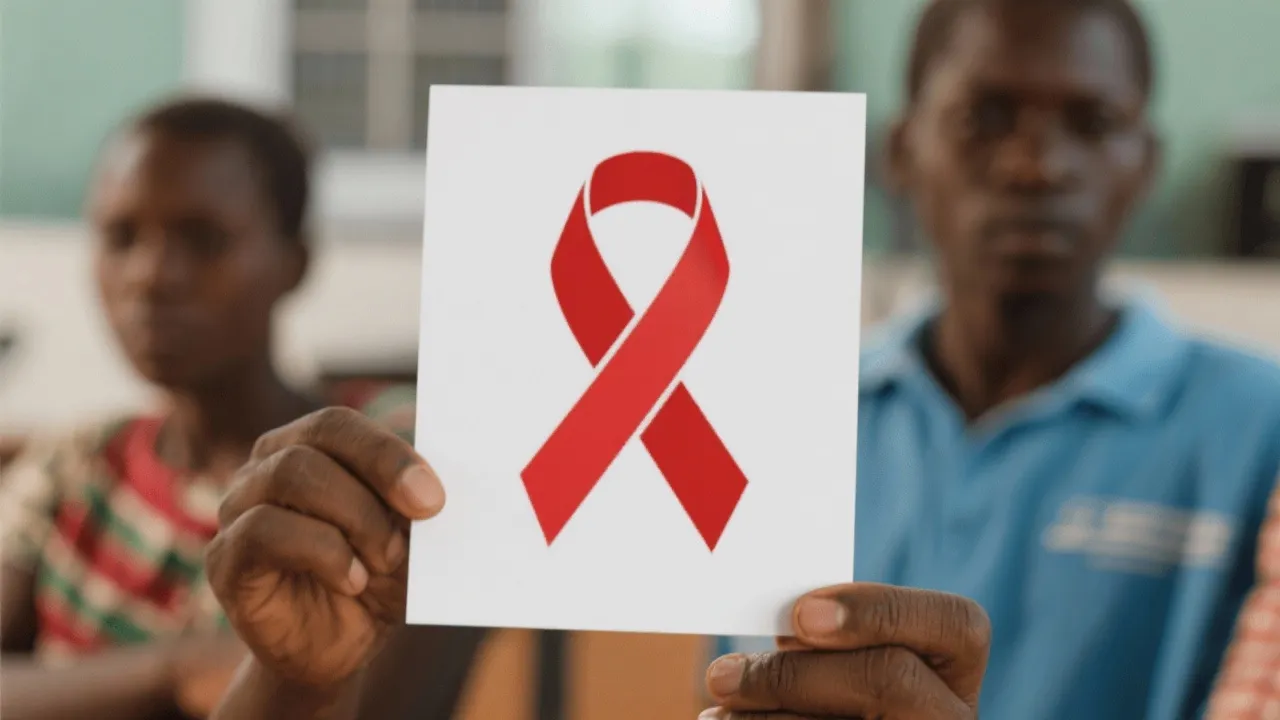Understanding the Decline in HIV Cases
Recent years have seen a notable decline in HIV cases globally, marking a significant milestone in public health achievements. This article delves into the factors contributing to this reduction, including advances in medical technology, increased awareness, and improved prevention strategies. By examining these aspects, it provides valuable insights into how these efforts are collectively combating the HIV epidemic.

The Global Decline in HIV Cases: An Overview
Over the past few decades, the world has witnessed a remarkable decline in HIV cases. This phenomenon is not only a triumph of medical advancements but also a testament to the concerted efforts of governments, nonprofits, and communities worldwide. The decline of HIV cases signifies a move towards a healthier global society, equipped with better tools for prevention, treatment, and awareness. This journey has illuminated the importance of collaboration across various sectors, and the evolving landscape of HIV management reflects a broader commitment to global health practices.
Key Factors Contributing to the Decline
Several factors have played pivotal roles in the declining rates of HIV:
- Medical Advancements: The advent of antiretroviral therapies (ART) has transformed the treatment landscape for HIV. These treatments have revolutionized patient care, allowing those infected to live longer, healthier lives while simultaneously reducing their ability to transmit the virus. The introduction of combination therapy, which uses multiple drugs to minimize the chance of viral resistance, has proven especially beneficial in improving outcomes for patients.
- Education and Awareness: Public health campaigns have dramatically increased awareness of HIV prevention, facilitating a reduction in new infections. Educational initiatives have not only addressed the general population but have also focused on high-risk groups, ensuring tailored strategies that resonate with diverse demographics. Enhanced knowledge surrounding transmission routes has empowered individuals to make informed choices regarding their sexual health.
- Prevention Strategies: Initiatives such as the distribution of affordable condoms, needle exchange programs, and pre-exposure prophylaxis (PrEP) have been critical in preventing new cases. For example, PrEP has gained traction as a preemptive measure among at-risk populations, significantly decreasing the likelihood of HIV transmission when taken consistently. These strategies serve as foundational pillars in a multifaceted approach to combating HIV.
- Policy and Funding: Increased funding for HIV research and treatment, including international organizations like UNAIDS and local government initiatives, contributes significantly to ongoing efforts against HIV/AIDS. Financial support not only facilitates access to medications but also enhances the infrastructure required for effective healthcare delivery. Effective policy-making that prioritizes sexual health and HIV prevention provides a framework for sustainable impact.
| Factor | Impact |
|---|---|
| Antiretroviral Therapies (ART) | Decrease in viral load and transmission rates. |
| Education Campaigns | Raised awareness and preventive actions in communities. |
| Needle Exchange Programs | Reduced risk of transmission among intravenous drug users. |
| PrEP Accessibility | Lower risk of infection for high-risk individuals. |
| Community Engagement Initiatives | Increased trust in health systems and improved health-seeking behavior. |
The Role of Localization in HIV Decline Efforts
Specific locations have tailored their approaches based on local HIV trends and demographic data. For instance, communities with a high prevalence of HIV benefit from localized health programs that are culturally sensitive and community-focused, thus amplifying the effectiveness of these efforts. Targeted interventions can include localized testing campaigns, outreach to vulnerable populations, and collaborative strategies that engage local leaders and organizations. Such approaches resonate more deeply with community members, fostering a sense of ownership over health initiatives.
Moreover, localization has also been about ensuring that interventions are not only scientifically sound but are also culturally and contextually appropriate. This involves understanding local language nuances and societal norms concerning sexuality and health. Programs designed in collaboration with community health workers have a higher likelihood of success because they incorporate feedback and insights directly from the people they aim to serve.
Challenges and Future Directions
Despite the progress, challenges persist. Stigmatization, socioeconomic barriers, and unequal access to healthcare continue to impede complete eradication. Addressing these issues requires innovative approaches and sustained global commitment. For example, stigma linked to HIV often prevents individuals from seeking help or open discussions about their health status, leading to further isolation and increased transmission risks. Comprehensive educational programs targeting stigma reduction need to be an integral part of public health campaigns.
Additionally, addressing socioeconomic disparities is essential to ensure that marginalized communities receive adequate healthcare access. Strategic funding should focus on enhancing infrastructure in underserved areas, ensuring that HIV testing, treatment, and preventive services are accessible to all, regardless of economic status. This might include mobile clinics, community-based testing events, or partnerships with local organizations to facilitate services.
Future strategies must focus on maintaining the momentum achieved thus far while targeting these persisting barriers. This may involve enhancing digital health initiatives, using telemedicine to reach remote populations, and leveraging technology for data-driven intervention strategies. Tools for real-time data collection and analysis can greatly improve the efficacy of HIV outreach programs by providing insights into transmission dynamics and population behaviors.
Innovative Approaches to HIV Prevention
Beyond traditional educational initiatives and treatment plans, innovative approaches are essential for tackling HIV. One such approach is the integration of technological advancements into HIV prevention and treatment strategies. The emergence of mobile health applications allows individuals to access resources, schedule testing or appointments, and receive reminders for medications or checkups easily. This use of technology not only improves health literacy but also fosters accountability among patients regarding their health management.
Additionally, peer-led support groups and networks can play a significant role in facilitating open discussions about HIV. These groups provide safe spaces for individuals living with HIV or at risk of infection to share their experiences, challenges, and coping strategies. This community-based approach helps dismantle stigma as individuals realize they are not alone in their struggles. Peer support significantly enhances mental health and encourages individuals to access services that might otherwise feel intimidating.
Global Collaborations and Their Impact
Global collaboration remains a cornerstone of successful HIV decline initiatives. Organizations like the Global Fund, PEPFAR (President's Emergency Plan for AIDS Relief), and various NGOs have steadfast commitments to reducing HIV infections worldwide. These entities provide funding, resources, and best practices, fostering an environment of shared knowledge and innovation.
Particularly noteworthy is the collaboration between countries with high and low infection rates. Wealthier nations provide financial aid and technical assistance to poorer countries, facilitating the transfer of knowledge about effective HIV treatment and prevention practices. This partnership enhances the capacity of lower-resourced countries to combat their unique epidemics, enabling them to implement effective interventions that align with their specific cultural contexts.
The Importance of Research in Sustaining Success
Ongoing research is crucial in sustaining the momentum of HIV decline. Efforts to develop an HIV vaccine remain a primary focus for researchers globally. Advances in immunology and virology pave the way for potential breakthroughs that could provide long-term immunity or even a cure. Understanding viral behavior, factors that contribute to persistent infections, and how the immune system can be bolstered against HIV are essential areas of investigation. Moreover, continuous research into medication regimens ensures that treatments remain effective against the evolution of the virus.
Furthermore, monitoring the effectiveness of current prevention strategies and adjusting them based on emerging evidence can help maximize impact. Behavioral studies examining the trends in human behavior concerning sexual health, as well as the uptake of preventive measures such as PrEP, can inform future public health campaigns. By understanding which demographics are most reluctant to adopt preventative measures, targeted strategies can be developed to overcome these resistance points.
Success Stories from Around the World
There are numerous success stories globally that illustrate the effectiveness of combined efforts to address HIV. For instance, in Botswana, a comprehensive antiretroviral therapy program has led to a significant decline in the nation’s HIV prevalence. Their early intervention approach, coupled with widespread public health campaigns, has ensured that over 90% of people living with HIV are aware of their status and 85% of those eligible are receiving treatment, setting a remarkable example for other nations.
Similarly, in Uganda, community-led initiatives have empowered individuals at risk for HIV through educational programs and outreach services. The focus on community engagement has lowered the stigma associated with HIV, fostering environments that support individuals in seeking treatment and practice safe behaviors. Their tailor-made strategies include the promotion of family planning services, which contribute to reduced transmission rates among young women.
Looking Forward: A Vision for an HIV-Free Future
As the world moves forward in its battle against HIV/AIDS, a collective vision can lead to profound change. Envisioning an HIV-free future is not merely aspirational; it is within reach if all stakeholders commit to collaborative and innovative approaches. This requires a sustained emphasis on effective community engagement, financial support for health systems, and a holistic understanding of the social determinants of health.
Reducing HIV cases globally necessitates a commitment to inclusivity, ensuring that marginalized voices are amplified within the discourse around HIV prevention and treatment. By prioritizing socially vulnerable populations, including sex workers, people who inject drugs, and LGBTQ+ individuals, interventions can be designed with consideration to the challenges they face, thereby improving accessibility and effectiveness.
In conclusion, while the declining trend in HIV cases represents a victory for public health, continued efforts and innovations are necessary to address the remaining challenges and achieve a future free from the HIV epidemic. By understanding and supporting effective strategies, societies can work together to secure this vision—ensuring that the lessons learned pave the way for a healthier, more equitable world for generations to come.
FAQs
- What are the primary reasons for the decline in HIV cases? Advances in medical treatment, increased awareness and education, and better prevention strategies.
- How effective are ARTs? ARTs are highly effective in lowering viral load and preventing disease transmission, leading to an undetectable viral load in many cases.
- What are the current challenges? Stigma, access to healthcare, and economic disparities remain significant challenges for HIV prevention and treatment.
- Are there any vaccines available for HIV? As of now, there is no effective preventive vaccine available, but research is ongoing, and promising candidates are being tested.
- How can individuals help in the fight against HIV? Individuals can support local organizations, engage in awareness campaigns, practice safe behaviors, and ensure they and their partners are regularly tested.





